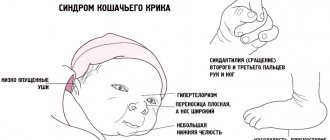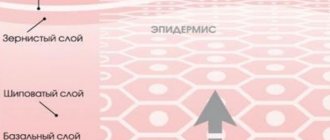The Mirena device is an effective intrauterine contraceptive device. In addition to its main purpose - protection against unwanted pregnancy, it also helps in the treatment of various female diseases. The spiral has a local effect and has a long service life. It has contraindications and side effects, which should be read in advance.
What types of intrauterine device are there?
Modern gynecology provides its patients with the opportunity to choose a method of contraception, but it is the intrauterine device that is particularly popular today among doctors and women. There are several types of IUDs, each of which is unique in its own way:
T-shaped
Manufactured using barium sulfate and polyethylene. The shoulders and leg of this contraceptive are wrapped with special environmentally friendly copper wire. The diameter of the conductor is about 4.4 mm. Installation is carried out using the so-called “removal method”.
F-shaped
This type of IUD has the smallest horizontal dimension among existing models. It is characterized by a high degree of flexibility and a safe effect on the area of the corners of the uterus.
Due to the presence of awl-shaped protrusions located on the shoulders of the spiral, the percentage of expulsions is reduced. The process of fixing the contraceptive in a high position is also easier.
When installing it, stretching of the uterus is not required and the “retraction” method is used. Equipped with a high-quality pistonless conductor, the diameter of which does not exceed 12 mm.
Ring-shaped
This contraceptive intrauterine device has the form of a closed plastic ring equipped with a special rod in the internal area. Along its circumference there is copper, the protector of which is a core made of silver.
It is this feature that allows you to not remove the IUD for seven to eight years. In the area of the lower annular pole there is a fastening loop intended for control threads. The spiral is also equipped with a conductor with a total diameter of 4 mm.
It is inserted using the “retraction” method, but if there is an intrauterine piston, the “withdrawal” method is used. Due to the fact that the contraceptive completely eliminates the occurrence of expulsion (displacement), this contraception option is ideal for women who have had an abortion, have ICI, and also after childbirth.
Methods of action:
Non-medicated IUDs.
The contraceptive effect is associated with a local aseptic inflammatory reaction. Those. minor inflammation in the uterus occurs not due to microbes, but due to the presence of a foreign body (spiral). Therefore, this process is safe. The spiral, like a foreign body, causes contraction of the muscles of the uterus and increases contraction of the fallopian tubes. Because of this, the fertilized egg (Yes, fertilization can occur with an IUD) moves faster through the tubes and enters the uterine cavity earlier than expected. Because of this, the fertilized egg cannot attach to the walls of the uterus and pregnancy does not develop.
Types of non-medicinal spirals.
- Copper-containing coils - copper enhances the inflammatory response, which makes it more difficult for sperm to penetrate into the uterine cavity, and it is more difficult for the egg to attach to the walls of the uterus (if fertilization does occur).
- Spirals containing silver in the lumen of the leg.
Spirals with gold, in the form of a wire wrapped around the leg.
Silver- and gold-containing IUDs are considered the most effective in terms of contraception (the contraceptive effect reaches 99%), prevent the development of inflammatory diseases, and the duration of action increases to 7–10 years.
How does the IUD work?
The main role in the action of the intrauterine device is played by copper itself, which is part of the composition of the contraceptive. It is capable of producing a special spermicidal liquid, the activity of which is aimed at the disposal of sperm.
The product also contains hormone-containing elements, which in turn perform the following functions:
- make the endometrium quite thin;
- the structure of vaginal mucus becomes thicker, due to which the speed of sperm movement decreases;
- male reproductive cells are destroyed;
- provides highly effective protection of the uterus from fertilization.
Despite the practicality of this contraceptive, it is not suitable for all women, so before installing it you should consult a gynecologist.
Rules for selecting an intrauterine device
Over the entire period of its existence, the IUD has repeatedly changed its shape and appearance, but each model had the same goal - to protect against unwanted pregnancy.
Each type of contraceptive has its own characteristics that are suitable for a particular structure of the uterus and vagina. That is why a certain model of the spiral, perfect for one woman, may be contraindicated for another woman.
For example, the tips of a T-shaped contraceptive are adjacent to the base during installation, and when they enter the uterine area, they are completely straightened. In the lower zone of the spiral there are nylon threads intended for removing the device.
However, the anatomical structure of the uterus in some women does not allow the use of a T-shaped coil. In this case, the most suitable option would be a semi-oval contraceptive equipped with special protrusions. Also, when choosing a product, it is important to pay special attention to the material of its manufacture.
Today, there are models that contain copper, silver, gold and other components that have antibacterial properties. However, installation of the spiral requires qualified selection and execution, so only a doctor should deal with this process.
Side effects
Complications arise during the introduction of the IUD or during its use. The list is presented:
- disruptions in the menstrual cycle;
- discomfort during menstruation or sex;
- heavy discharge during menstruation;
- allergic reactions to the component composition.
The occurrence of adverse reactions requires the removal of the uterine contraceptive and the search for a more suitable contraceptive.
Advantages and disadvantages
Like any modern contraceptive, the IUD has certain positive and negative sides. Therefore, before installing the spiral, you need to familiarize yourself with them in more detail.
Advantages:
- highly effective protection against unplanned pregnancy (99%);
- the product works all the time, even during the menstrual cycle;
- the operational life of the contraceptive ranges from three to five years;
- the ability to install a spiral for a period of ten years (some variations);
- lack of hormonal influence, which allows the product to be used by women who are breastfeeding and whose age category exceeds 35 years;
- minimizing the possibility of gynecological inflammatory diseases;
- menstruation becomes less painful and more abundant;
- does not interfere during intimacy and in everyday life.
If we talk about negative aspects, they are as follows:
- the process of installing and removing a contraceptive should be carried out exclusively by a doctor;
- It is not recommended to install an IUD in women who have not yet given birth;
- the risk of some complications cannot be excluded;
- the spiral is not able to protect against infectious diseases that are sexually transmitted.
- Despite the presence of some disadvantages, the intrauterine device is one of the most reliable and effective methods of contraception.
Pros of using an IUD:
+ One spiral can be used for 3-10 years (depending on the type).
+ Highly effective against unwanted pregnancy.
+ Fertility is preserved; after removing the IUD, you can become pregnant and give birth.
+ Not felt during sexual intercourse, does not affect arousal or orgasm.
+ Does not require any additional actions: no need to take pills, remember condoms, and so on. You can install an IUD for a long time and forget about other methods of contraception.
+ You can install a spiral after childbirth and during breastfeeding.
+ Low cost relative to other methods of contraception (due to the long period of use).
+ Hormonal IUDs also help in the fight against certain diseases, such as fibroids, endometriosis, painful menstruation, uterine bleeding, etc.
Contraindications
The IUD is suitable for almost all representatives of the fair sex, however, there are nuances that prohibit its installation. These include:
- erosion in the cervix;
- the presence of infectious and inflammatory gynecological pathologies;
- the presence of cancer in the genital area;
- teenage girls and nulliparous girls;
- a large number of sexual partners.
Only a gynecologist will be able to determine the possibility of using an IUD as a method of birth control. If necessary, the patient will need to undergo a treatment course.
What complications can you encounter?
Naturally, any intervention can cause health problems, and the installation of an intrauterine device is no exception. However, during the examination, the doctor must warn about possible problems, which include the following:
- heavy bleeding that does not stop for several weeks;
- the presence of spasms in the uterine area;
- painful menstrual cycle;
- random loss of the contraceptive;
- the presence of infections in the pelvic organs;
- damage to the organs of the reproductive system and uterus;
- infertility;
- Possible cessation of menstruation.
Like any other contraceptive, the intrauterine device does not provide 100% protection, although the rate is quite high - 99%. However, 1% still remains and can cause premature birth, miscarriage or ectopic pregnancy.
Sources
- Beksinska M., Issema R., Beesham I., Lalbahadur T., Thomas K., Morrison C., Hofmeyr G.J., Steyn PS., Mugo N., Palanee-Phillips T., Ahmed K., Nair G., Baeten JM., Smit J. Weight change among women using intramuscular depot medroxyprogesterone acetate, a copper intrauterine device, or a levonorgestrel implant for contraception: Findings from a randomized, multicentre, open-label trial. // EClinicalMedicine - 2022 - Vol34 - NNULL - p.100800; PMID:33898953
- Collier EK., Price KN., Grogan TR., Naik HB., Shi VY., Hsiao JL. Characterizing perimenstrual flares of hidradenitis suppurativa. // Int J Womens Dermatol - 2022 - Vol6 - N5 - p.372-376; PMID:33898701
- Thibodeau R., Simone BA., Tanny S., Hahn SS., Aridgides PD. Advantages of real-time transabdominal ultrasound guidance in combined interstitial/intracavitary cervical brachytherapy: a case-based review. // J Contemp Brachytherapy - 2022 - Vol13 - N2 - p.211-220; PMID:33897796
- Lucchini SM., Esteban A., Nigra MA., Palacios AT., Alzate-Granados JP., Borla HF. Updates on conservative management of endometrial cancer in patients younger than 45 years. // Gynecol Oncol - 2022 - Vol - NNULL - p.; PMID:33892887
- Shim SH., Chae SH., So KA., Lee SJ., Lee JY., Kim TJ., Han ES., Kang SB. Optimal duration of fertility-sparing hormonal treatment for early-stage endometrioid endometrial cancer. // Gynecol Oncol - 2021 - Vol - NNULL - p.; PMID:33875233
- Sato R., Rohr J., Huber S., Esmer Y., Okçuoğlu BA., Karadon D., Shah I., Canning D. Effect of distance to health facilities and access to contraceptive services among urban Turkish women. // Eur J Contracept Reprod Health Care - 2022 - Vol - NNULL - p.1-9; PMID:33874821
- Laporte M., Metelus S., Ali M., Bahamondes L. Major differences in the characteristics of users of the copper intrauterine device or levonorgestrel intrauterine system at a clinic in Campinas, Brazil. // Int J Gynaecol Obstet - 2022 - Vol - NNULL - p.; PMID:33872406
- Rousset-Jablonski C. . // Gynecol Obstet Fertil Senol - 2022 - Vol - NNULL - p.; PMID:33867317
- Marchin A., Moss A., Harrison M. A Meta-Analysis of Postpartum Copper IUD Continuation Rates in Low- and Middle-Income Countries. // J Womens Health Dev - 2022 - Vol4 - N1 - p.36-46; PMID:33860278
- Peng NL., Ling EKY. The Role of Video-Assisted E-Learning in Intrauterine Contraceptive Device Insertion Training. // PRiMER - 2021 - Vol5 - NNULL - p.5; PMID:33860160
How is an IUD installed?
First of all, a woman must undergo a special examination, which will show the presence or absence of sexually transmitted infections. Next, the procedure involves an examination in a gynecological chair and further selection by a specialist of a type of spiral that has no contraindications.
A contraceptive is placed without the use of anesthesia, however, if the patient is highly sensitive, an anesthetic injection or anesthetic gel can be used. The woman in the gynecological chair is treated with an antiseptic solution.
After this, using a special tool, the doctor opens the uterus and measures its depth, the length of which should ideally match the dimensions of the spiral itself. When installing a T-shaped IUD, the specialist first places it in a special box, which is inserted into the uterine area through the vagina.
After the contraceptive is fully expanded, the tube is removed. The procedure is carried out quickly - about 5 - 7 minutes. It is advisable to visit a gynecologist’s office after a month for an examination and check the location of the “antennae” of the contraceptive.
It is also extremely undesirable to engage in intimate relations within a few days after the installation, use tampons, douches, go to the sauna, overdo physical activity and take a bath.
Recommendations after IUD insertion
Immediately after placing the spiral, the woman needs a 30-40 minute rest (lying down). Then she can safely go home, but follow the following rules there:
- abstain from sexual activity for a week;
- carry out thorough hygiene of the genital organs;
- do not overload the body with heavy physical labor for two weeks;
- appear for a follow-up examination in 10 days.
You should know that the placement of the spiral does not leave its mark on the female body. In the first days after the procedure, tolerable aching pain in the lower abdomen is felt. They can be eliminated by using analgesics or antispasmodics in tablet form. Sometimes bloody discharge may appear, which stops within a week. The next menstrual cycle may be slightly delayed, and the discharge may be longer and more abundant.
How is the intrauterine device removed?
The contraceptive is taken away after the end of its operational life or at the request of the patient. Before removing the IUD, you must again undergo a series of examinations similar to those during its installation. The spiral is obtained by pulling the “antennae” using special tweezers.
This should be done only at a certain angle, so you should not try to get the contraceptive yourself in order to avoid damaging the delicate walls of the vagina. After its removal, the patient may feel aching pain in the abdominal area for a couple of days - this is normal.
But, if you detect discharge with blood or if your temperature rises, you must immediately contact a gynecological clinic.
Oksana Igorevna
MAKE AN APPOINTMENT
[contact-form-7 id=”296" title=”Untitled”]
Before having an abortion, a woman must make an appointment with a gynecologist.
An initial consultation is necessary to confirm the fact of pregnancy, accurately determine the period, size and place of attachment of the fetus.
Based on the results of the consultation, a decision is made regarding the possibility of terminating the pregnancy and the optimal method of abortion is determined.
THE COST OF AN ABORTION IN OUR CLINIC FROM 4500 rubles. THE PRICE INCLUDES PILLS, APPOINTMENT WITH A GYNECOLOGIST EXAMINATION, AN ULTRASOUND TO DETERMINE THE DATE OF PREGNANCY!
When to see a doctor urgently
Complications after the introduction of intrauterine contraceptives are observed in women who have had extrogenital diseases in the past. The following pathological conditions most often develop:
- bleeding;
- pain syndrome;
- prolapse of the IUD;
- inflammatory diseases of the genital organs.
Immediate consultation with our specialists is required in cases of fever, heavy discharge, or severe pain after insertion of the IUD.
For the gynecologists of our clinic, a woman’s health comes first, so we are always happy to help you solve such an important issue as contraception. Trust us and we will make every effort to ensure that the result does not disappoint you.
Cost of some services in our clinic
| Medical abortion MIROPRISTONE (appointment with a gynecologist, ultrasound included) | 4500 rub. |
| Medical abortion Mifepristone (appointment with a gynecologist, ultrasound included) | 6500 rub. |
| Medical abortion MIFEGIN (France) (appointment with a gynecologist, ultrasound included) | 9400 rub. |
| Gynecologist appointment | 1000 rub. |
| Appointment with a gynecologist-endocrinologist on contraception issues | 1500 rub. |
| Expert pelvic ultrasound (all organs) | 1200 rub. |
| Ultrasound of the uterus (for pregnancy) | 1000 rub. |








